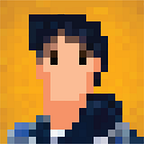4 Cutting-edge Web Design Trends For 2019 And Beyond!
Hard to believe, but 2019 means we’re heading into the final chapter of the decade. The internet has grown and changed a lot in the past ten years: we’ve seen the reign of mobile, the introduction of AR, VR, AI, AMP and many other acronyms.
As exciting as all of this new technology has been, where we really see and feel these changes is in web design trends.
So let’s dive in and see what’s worth while for 2019.
1. Serifs on screen.
We’ve all heard the rule that serifs are for print and sans serifs are for screen. But what are design trends for if not to give convention a little shaking up?
While sans, with its clean readability, is still the go-to for longer bouts of website copy, more and more brands are turning towards bold serifs in other aspects of their designs such as headers and callouts.
And even though serifs are often associated with the past, they have lots of character and are more adaptable than you might think. Take for example the rounded serifs that play into Mailchimp’s cheerful branding. Or the wedge serifs and bold strokes that create a modern look for Medium.
2. Natural, organic shapes.
Though web pages are typically set up for systematic grids, designers are turning towards natural shapes and smooth lines. Geometric structures such as squares, rectangles and triangles with their sharp corners do create a sense of stability, but 2019 trends are more concerned with a feeling of accessibility and comfort.
Because organic shapes are naturally imperfect and asymmetrical, they can provide depth to a web design that makes page elements stand out. They are based in nature (think of the curving forms of trees and hills), but free-drawn elements can capture the spontaneity of man-made accidents such as paint splatter. The goal here is for web designs to feel human and alive through the illusion of movement.
3. Three-dimensionalized takes on mostly flat cut-out style:
This style has become more popular since it’s working on mixing the style of the website and the illustration it takes time to work with but if done well it’ll run well on sites. Also works great with mobile.
4. Integrated animations
As browser technology advances, more websites are moving from static images and finding new ways, like animations, to engage users in their communication approach.
Smaller animations are helpful for engaging the visitor throughout their entire experience on the page. For example, graphics can animate the user while the page is loading, or show the user an interesting hover state from a link. They can also be integrated to work with scrolling, navigation or as the focal point of the entire site.
Note From The Editor:
I hope you enjoyed reading this article about the future of the web. We did a lot of research on this article. I hope you enjoyed it and make sure to 👏it.
Wanna have access to more helpful guides?
Join our Discord Server: https://discord.gg/uUUHsUA
Follow us on Twitter: https://twitter.com/ZeduHow
Subscribe to us on YouTube: https://www.youtube.com/channel/UCh1mq_ZF1AQqwPDfCGH5BKw?view_as=subscriber
Support ZeduHow on Patreon: https://www.patreon.com/ZeduHow
